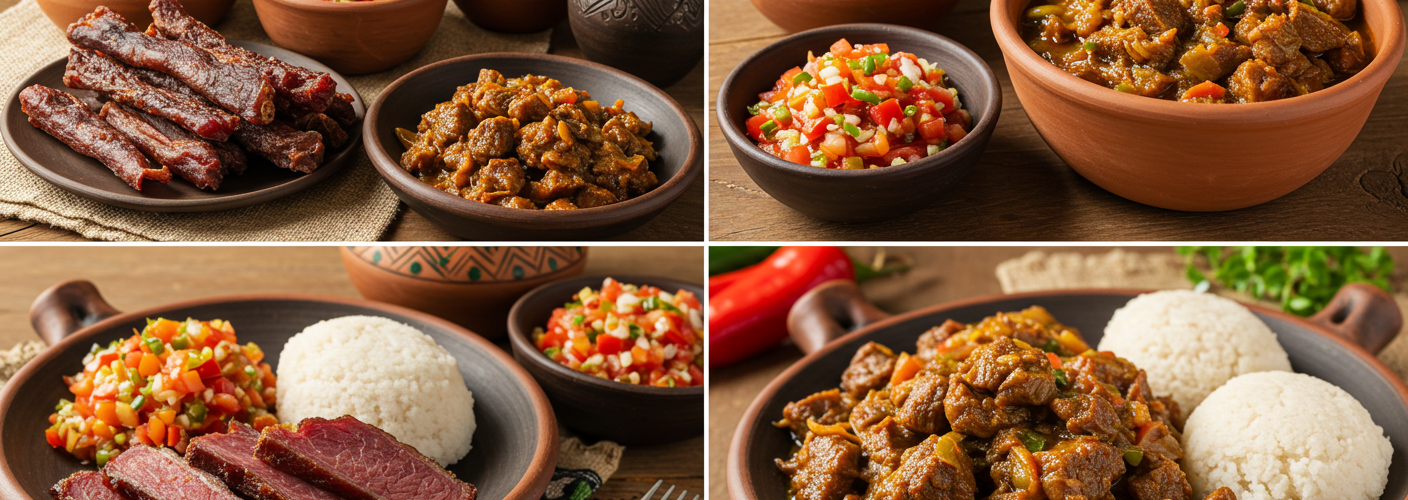Zimbabwe offers a diverse and flavorful culinary experience, intertwined with its rich cultural heritage and geographical diversity. The country is known for its traditional dishes that showcase indigenous ingredients and cooking techniques, reflecting the lifestyle and history of its people. If you’re curious about Zimbabwean food, here’s an overview of its unique flavors, staple ingredients, and popular dishes.
Staple Ingredients
At the heart of Zimbabwean cuisine is sadza, a thick porridge made primarily from cornmeal. Sadza serves as a staple food and is typically served as the main accompaniment to various savory dishes. It can be enjoyed with a variety of relishes, including vegetables, meat, or fish. The preparation and enjoyment of sadza bring families together, making it a symbol of Zimbabwean hospitality.
Another key ingredient in Zimbabwean cuisine is mealie-meal, consisting of finely ground corn. It is often turned into porridge for breakfast or used in other dishes. Besides maize, other grains like millet and sorghum are also popular and are reflected in various traditional recipes.
Traditional Dishes
- Sadza ne Nyama: This dish consists of sadza served with a savory meat stew, commonly beef or goat. The meat is typically slow-cooked with a blend of spices and tomatoes, giving it a rich flavor that pairs perfectly with the neutral taste of sadza.
- Sadza ne Vegetables: For those preferring a vegetarian option, sadza is often accompanied by vegetable dishes such as sukuma wiki (collard greens) or mapudzi (pumpkin leaves). These dishes provide a healthy complement to sadza, contributing vitamins and minerals to the meal.
- Biltong: A popular snack throughout Zimbabwe, biltong is dried, cured meat that is seasoned with a mixture of spices. This protein-packed treat is perfect for those on the go and is reminiscent of jerky found in other cultures.
- Kapenta: These small freshwater fish are commonly consumed in Zimbabwe, particularly in areas near Lake Kariba. Kapenta is often fried and served with sadza or rice, providing a delectable and protein-rich addition to meals.
- Chibage: A beloved street food, chibage is corn on the cob roasted over an open flame. It’s often sold by vendors in urban areas and enjoyed as a tasty snack, especially in the evenings.
Cultural Significance
Food in Zimbabwe goes beyond mere sustenance; it plays a crucial role in social gatherings, celebrations, and rituals. Traditional dishes are often prepared during ceremonies and holidays, bringing communities together. Sharing a meal is an integral part of Zimbabwean culture, symbolizing unity and friendship.
As modern influences merge with traditional practices, Zimbabwean cuisine is evolving. Contemporary chefs are beginning to incorporate global flavors while still paying homage to their roots. This culinary fusion is helping to revitalize interest in Zimbabwean cuisine and introduce it to a broader audience.
Conclusion
Zimbabwean food offers a vibrant tapestry of flavors, textures, and cultural significance. From the hearty sadza to the delightful kapenta, the culinary traditions of Zimbabwe are a celebration of community and heritage. Whether you are exploring local markets or dining at a traditional restaurant, embracing the culinary delights of Zimbabwe is an experience that connects you to the heart of its people.




Add comment